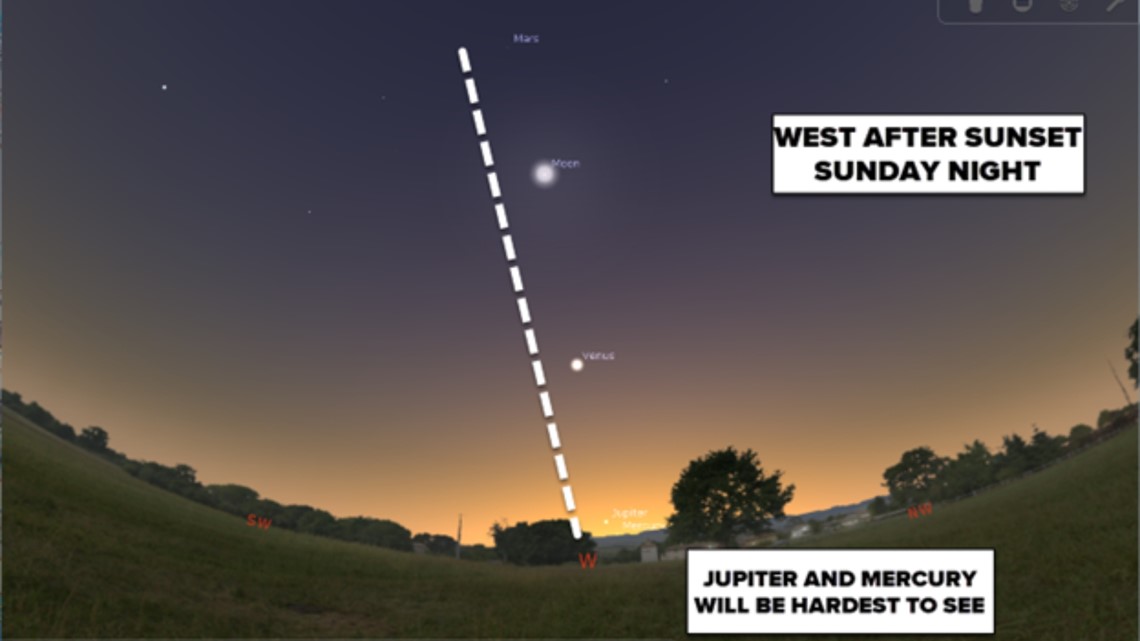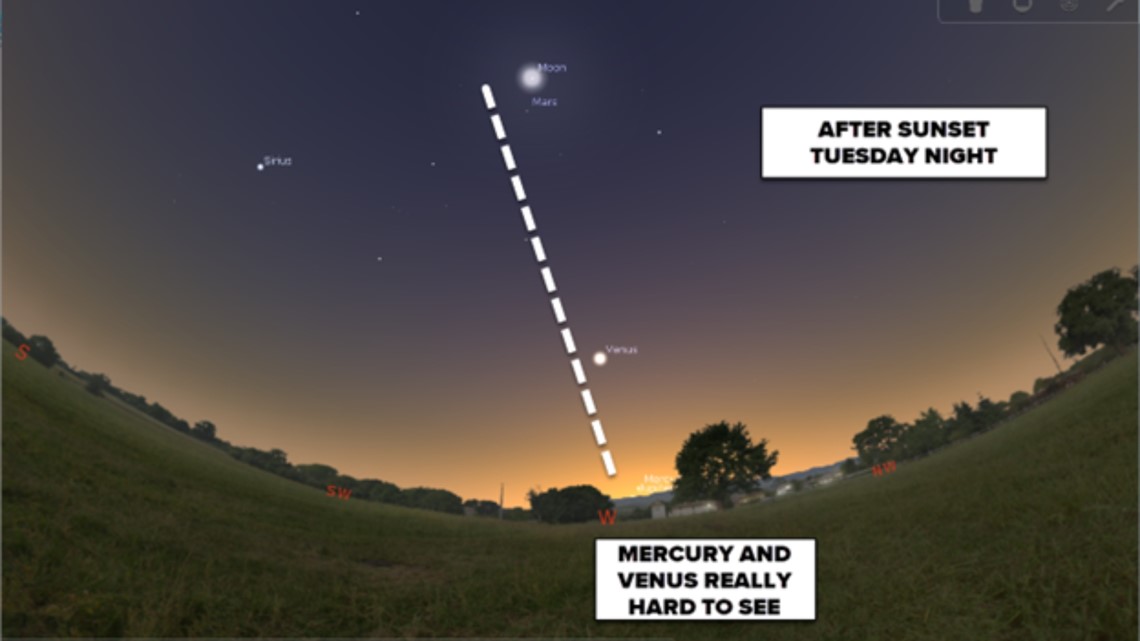CHARLOTTE, N.C. — There will be a nice, visible line of four planets in the evening skies this weekend and into the last week of March. The alignment happens about once a year on average. You’ll need to look in the western sky shortly after sunset to see Jupiter and Mercury near the horizon and hard to see.
Those two planets will be setting just after the sun. The combination of the setting sun and being so close to the horizon will make them challenging to see. You will need a very flat and clear view of the western horizon to see those two.


Above and higher in the sky, you’ll clearly see Venus, which is the easiest to spot. It’s the second brightest object in the night sky other than the Moon. Then above Venus and much higher up, you’ll see Mars. It’s fainter and reddish in tone but not hard to spot. Depending on the night, you’ll also see the Moon this weekend and early this week above and below Venus and Mars.
You may have seen posts about five planets being visible, and while Uranus is also in this line, it is not visible to the naked eye at all. You can’t even see it with binoculars in most cases. To see Uranus, you would require a 100-times imagination telescope or another visually-aided device to see it.


So it’s technically up there, but it most definitely is not visible. Temper the expectation that 5 planets will be visible. Even these four will not be easy to spot, but a few will be easy.
While spotting these four planets, look for the ecliptic or the line planets form across the sky. This is the plane of the solar system that the planets orbit along. Or every degree of latitude added as you go north, it adds one degree of tilt to this ecliptic. So, the angle of the line of these planets will depend on where you are viewing them from.
Contact Brad Panovich at bpanovich@wcnc.com or follow him on Facebook, Twitter and Instagram.

